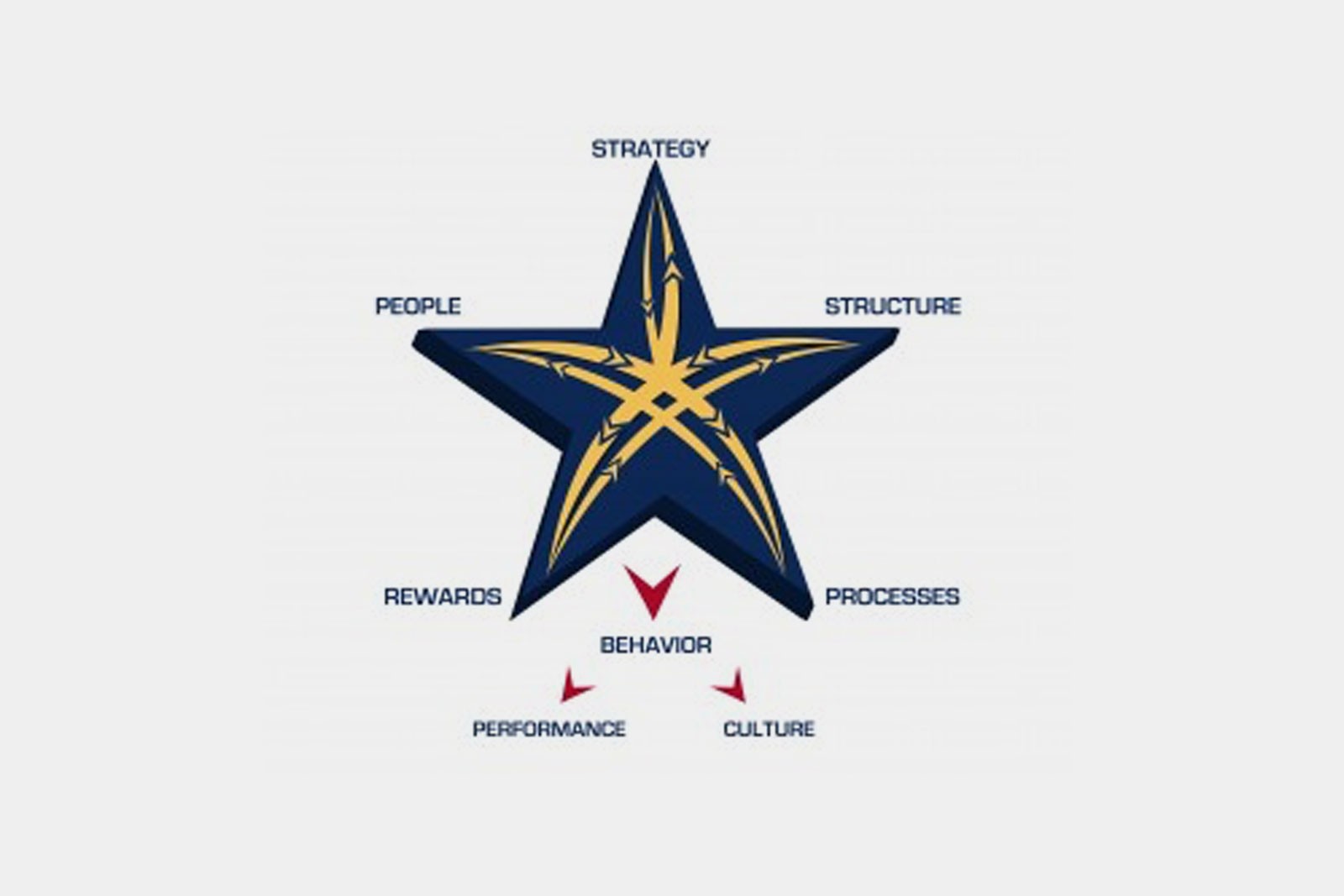Jay Galbraith’s Star Model of organizational design is a well-known and widely implemented concept in both the public and private sectors. The Model instructs organizations to use the business strategy or agency mission to drive structure decisions. Based on these existing structures and processes, further development of human resource capabilities are outlined and appropriate processes are implemented.
The key elements of organizational design in the Star Model include:
- Strategy – outlines an organization’s goals and objectives to fulfill it’s mission
- Structure – communicates an organization’s placement of power and authority
- Processes – enables work flow and resource allocation
- People – governs the human resource policies of recruiting, selection, rotation training and development
- Rewards – aligns the goals of the employee (the people) with the goals of the organization
The original Star Model implements a single structure type based upon the strategy or mission. Such structure types may include: functional, product, market, geographical or process-related. Today, organizations and Government Agencies change strategies often to keep up with market demands, innovation, and new technologies. Competitors that can efficiently reproduce an effective strategy, force market leaders to continuously improve processes and structures to align their own proficiencies when implementing effective change. A static organizational structure rarely supports frequently changing organizational strategy, stagnating the organization’s progress and ability to respond quickly to market trends and industry demand. To achieve this level of fluidity, the supporting organizational structure and processes must be dynamic in order to support changing strategies.
Jay Galbraith authored Designing a Reconfigurable Organization, which describes how organizations can use the Star Model to reconfigure structure and supporting processes in order to provide the foundation for a continuously changing strategy.
Structure in a reconfigurable organization has both stable and variable components. The functional structure is the stable component. This is the “home” base for employees, particularly specialists and subject matter experts. These resources participate in cross-functional teams but do not rotate across functions.
The variable portions of a flexible organization allow a business or agency to further organize miniature business units by product, market segment, channel, technology or other relevant parameter. Employees from functional areas may participate in one or more cross-functional team(s).

Infrastructure which supports the capability to reconfigure includes:
- Information and goal-setting processes which support the determination of profitability at the individual business unit level – these processes may include accounting, data structures and planning
- A strong management team which can set priorities and divide resources among many business units
- Strong conflict management skills at all levels to quickly resolve conflict brought about by constant change
- Human resource policies and practices which support a reconfigurable culture. Because positions will change, an employee who can excel within changing cross-functional teams is more valuable than a resource with a specific skill-set
- Training targeted at developing cross-functional team participation – training should be aimed at developing relationships as well as skills
- Reward and appraisal systems that foster cross-unit skills and interpersonal networks – team based appraisals are favored over a single manager appraisal
- External partnerships to account for capabilities the organization does not have
In order for the reconfigurable Star Model to be successful, top management must be committed to organizational flexibility and implement the infrastructure required to support the needs of the organization or agency. While time and resources are required to build the necessary systems and practices, the result will be an organization that is able to create short-term temporary advantages which lead to customer value. An organization with flexibility in creating customer-valued capabilities will surpass competitors.
The STAR Model was a significant contribution to the organizational design community. Jay Galbraith passed away in April of 2014. A Jay Galbraith Memorial Project was completed to highlight his contributions to the field of organizational design.
